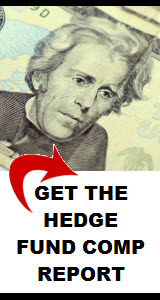If any common ground exists between Hillary Clinton and Donald Trump, it is on the subject of carried interest taxation. Both regard the favorable tax treatment received by private and hedge fund general partners on carried interest to be grossly unfair.
The politicians and many mainstream media pseudo-journalists make an uncomplicated argument—carried interest is taxed at the capital gains rate of around twenty percent, whereas it should be taxed as ordinary income, which is subject to a maximum rate of about thirty-nine percent. The politicians say, “It’s just unfair, that truck drivers, secretaries and nurses pay higher taxes than hedge fund billionaires!”
The Argument Is Straightforward but the Facts Are Complex
Of course, the political argument is fundamentally misleading. While hedge fund and private equity partners may pay a lower effective tax rate, they will almost certainly write a bigger check to Uncle Sam than a boatload of truck drivers, secretaries and nurses will pay collectively in federal income tax.
That said, Trump’s tax plan, as originally drafted, would hand hedge fund and private equity general partners a net windfall by reducing their overall tax rate to 15 percent, well below the current capital gains rate paid on carried interest. Trump has recently made revisions that deny pass-through entities (like hedge funds and private equity firms) the ability to qualify for the proposed 15 percent business rate. Moreover, Trump remains committed to taxing carried interest as ordinary income.
Clinton’s approach to the so-called carried interest loophole is radically different from Trump’s proposal in that she believes the Treasury Secretary has the authority to unilaterally define carried interest as ordinary income and tax it accordingly—no congressional action required. And, unlike Trump, Clinton plans across the board tax increases for the wealthiest Americans.
Monetary Impact
The Congressional Budget Office (CBO) estimates the elimination of the carried interest loophole would generate around $18 billion in revenue over ten years. This means $1.8 billion of additional revenue for the federal government, annually. When one considers the total value of assets under management in the industries primarily affected (hedge funds and private equity firms) is just over $7 trillion, a $1.8 billion annual impact seems quite small, relative to the high profile dust-up this tax question has engendered.
Hedge Fund Jobs
Hedge fund jobs will not suffer if the carried interest tax rate is calculated on the basis of the ordinary income tax rate. Aggregate hedge fund performance has been less than robust over the past three years, meaning far fewer dollars are eligible for the loophole tax rate. This may explain why the impact of the increase in the tax rate is insignificant, as cited in the CBO’s report.
According to the 2016 Hedge Fund Compensation Report, 75 percent of hedge fund professionals do not participate in upside sharing (hedge fund speak for carried interest) and, of the remaining 25 percent, 13 percent receive a share amounting to less than 2 percent of the available pool of funds. The report offers considerably more detail for anyone interested. The important take-away is that the impact on the vast majority of hedge fund professionals will be zero and almost zero for the remainder.
While hedge funds remain the industry that everyone loves to hate, the changes proposed by both candidates with regard to carried interest will have an impact that falls very much short of voter expectations. There will be no wailing, no gnashing of teeth and no leaps from the ledges of iconic Wall Street buildings.






Comments on this entry are closed.